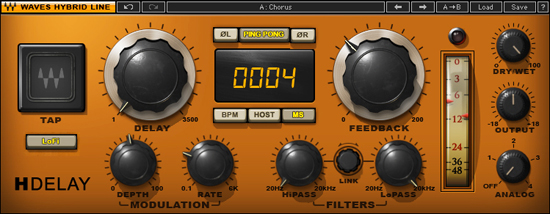
State of the Mix 2011: Repeating Things
Lately, I’ve been playing around a bit more with delays. Delay has been sort of an addiction for years that probably goes back to playing guitar in bands. It has always been a cheap thrill for me. I’ve always had a little delay thing I’ve used on vocals that’s hard for me to describe but if you watched me mixing you’d pick up on it pretty fast, but beyond that I’ve never used it much.
Over the last couple years my interest in using delays in other ways was piqued when I started looking closer at some of Michael Brauer’s(John Mayer, Coldplay) mixes. Brauer is a delay fiend and has a lot of esoteric units he likes to use. The interesting thing, though, is that if you listen to his mixes you don’t hear this delay thing popping out. It’s a very subtle thing that gives a sound some color and depth. His delays get used almost as an alternative to reverb. My friend Chris Briley was doing something similar earlier this year when I sat over his shoulder while he mixed the Drive Conference.
So I’ve been getting into delay as an alternative to reverb on vocals. This sort of fits me because if you spend enough time around me you’ll pick up sooner or later how much I can’t stand reverbs. I love the idea of ‘verb, I just can never get the stupid things to work right…well, maybe that’s not entirely true because I’m generally happy with what I get on drums. But when it comes to a vocal, it is very difficult for me to get ‘verbs to sound and function the way I want them to in the mix. I make it work, but the vision in my head is rarely realized. I’m having much more luck with the delay, though.
Using delay for this makes sense because in essence reverb is really just a ton of delays that all smear together. The advantage to using a delay instead of reverb is it can be easier to maintain clarity while still getting some of that sense of depth that helps a vocal sit more naturally in the mix.
Here’s the practical application. I take a delay with a single repeat tap tempo’ed to a 1/4 note delay that I feather up under the vocal. Multiple repeats typically haven’t worked for me because they make this too obvious, and the idea is to have something very subtle.
Now the real key to this is to EQ the snot out of the delay…well, maybe not too extreme. But EQ is important, and I’m typically doing two things with it. First I’m taking out the highs and upper-mids. High frequencies give us a sense of proximity. Closer sounds have more high frequency content than things that are farther away because high frequencies are naturally attenuated as sound waves travel through the air. Our brains know this and perceive things with less high-frequency content as being further away. Rolling off the top on the delay does two things. First it pushes the sound back to give us a sense of a larger space since the delayed audio acts similar to a natural room reflection. Second, taking the top end off leaves space for the top end in the original, dry signal. This is important because that top end is where the clarity lies and keeping the delay from fighting the original up there goes a long way in this.
The other place I’ll typically EQ is in the lows and low/mid’s. This goes back to something that Robert Scovill and I talked about last year: Our perception of clarity in the mid-range is based on the clarity of the low-mids. I’m typically fishing for frequencies that muddy up and add weird resonances to the vocal.
Now this delay use isn’t always perfect. The biggest challenge for me lies in the fact that a 1/4 note delay is an audible echo, but the idea isn’t to have a perceptible echo all the time. So the level of the delay needs to be very subtle, and there’s often a fine line between getting the desired effect and perceiving the echo. I’ve tried faster settings, but anything faster than a 1/4 note feels too short for me. Another thing about this I find important is to have the fader for the delay return at close hand. Since the effect needs to remain subtle, having people in the room can effect how well this works, and it might need tweaking as the room changes.
There are also a couple other things I’ve done with delays over the last year or so that I’ll mention. One thing is to use the delay to set my reverb pre-delays. I do this by basically chaining a delay with a single repeat in front of a reverb. I’ll typically set this up for more of a slap-type delay probably timed to a 1/16th note or in the 100-170ms range.
Another little trick is an early delay thing I got from Dave Moulton, but I’m still experimenting on its feasibility in live sound. The basic idea is to take a stereo delay and set it so that the delay time is within the Haas zone which is typically below 40ms; above that things are perceived as echo. This effect is useful for creating a sense of space around a sound, and the delay time is basically the size control for this effect; a longer time will give the impression of a bigger space. Then I flip the polarity on one side of the delay. The problem is, you need to hear both sides of the stereo delay for this to work, and it’s pretty cool when it does. However, when you only hear one side of the delay, the time difference between the delay and the original sound can induce comb filtering if the delay is too hot in the mix. So I’m still playing around to see if I can find a level for the delay in the mix that works for folks who hear the left and right of the PA while minimizing comb filtering effects for folks who only have coverage from a single stack. Sometimes it works and sometimes it doesn’t. My gut is I’m not going to be using this in live sound much, but broadcast is probably a different story.
So there are a few things I’m doing with delays. What are you finding them useful for?

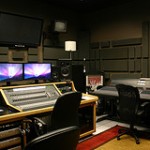 Previous Post
Previous Post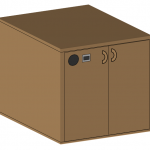 Next Post
Next Post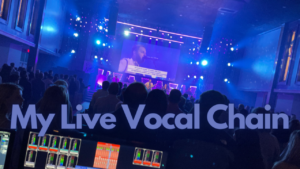

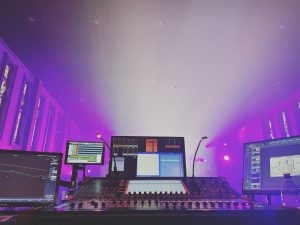
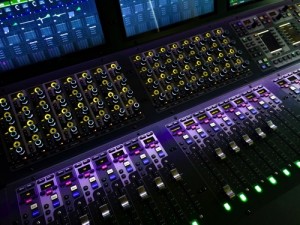



This is pretty similar to my approach, but I do a few things differently. First off, over the past year I have mostly stopped putting the delay in tim with the song. Instead I generally use a delay around 300ms. Which tends to be about as slow as i can go without being too echoey or having phrases run into each other. Usually I HP at around 200hz and LP at 1k.
The next thing I do though is send the delay to a reverb at 0db, as well as sending it to the LR. The result is a delay that is much more diffused and less distracting. This allows me to have more space around the vocal without the added distraction that an echo can bring.
Try it out, it`s a great way to make the vocals float.